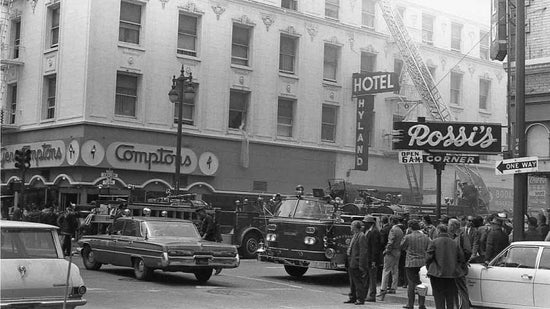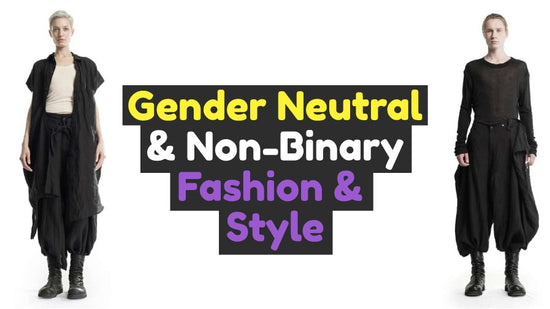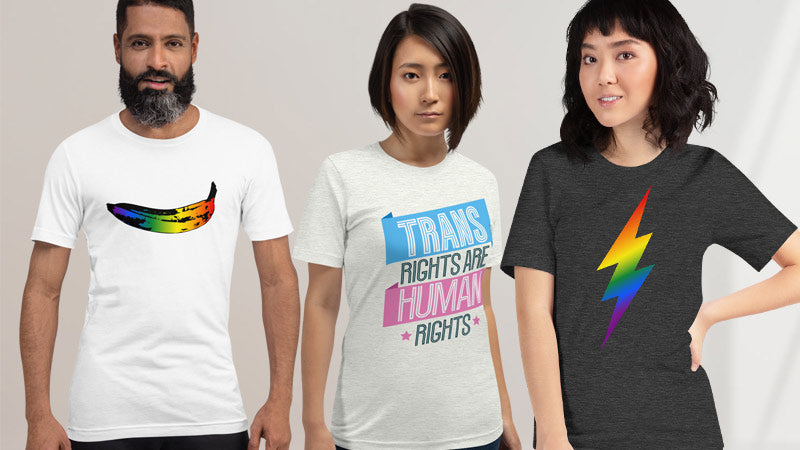Transgender Awareness Week And Trans Day Of Remembrance

What is Transgender Awareness Week
Trans Awareness Week is an annual event to help raise the visibility of transgender, non-binary and gender diverse people, highlight our life experiences and discuss issues faced by the trans community.
It’s a time when we as a community can share stories and experiences, and speak out around the issues we face. Issues such as prejudice, discrimination, oppression, bullying, harassment and violence. But it’s also a time to celebrate who we are and advocate for equality.
When is Transgender Awareness Week
The timing is important as it culminates with Trans Day of Remembrance (TDoR) on November 20th. So Trans Awareness Week is always held between the 13th and 19th of November.
SHOP OUR TRANS COLLECTION
As a business owned by a trans woman we at The Rainbow Stores are only too aware of the importance of raising our collective voices. Transphobia is on the rise and the mental health of all gender diverse people is being badly affected.
In 2021 there were 375 trans people murdered around the world. That is an increase from 350 in 2020, and numbers have been rising for many years. One in four of those murdered were killed in their own home.
In the last year we have seen the levels of transphobia rise sharply in many countries. In the UK between 2021 and '22 transphobic hate crime has increased by a staggering 56%. Since 2016 it has soared by an almost unbelievable 350%.
In a TransActual UK Survey in 2021
- 85% of trans women reported being subjected to transphobic street harassment from strangers
- 63% of respondents reported experiencing transphobia while seeking employment
- 93% of participants reported that media transphobia had impacted their experiences of transphobia from strangers on the street.
In the United States many Republican controlled states are now enacting laws that discriminate against trans people and in some cases, seek to criminalise parents and organisations helping trans kids.
Trans Awareness Week gives us an opportunity to educate the public about these critical issues, about who trans people are and what our lived experience is. It allows us to advocate for equal rights and protest against inequality.
Trans Day of Remembrance, Together We Remember
Arguably the most important date in the trans calendar is on
November 20th. Trans Day of Remembrance (TDoR) was started in 1999 by trans advocate Gwendolyn Ann Smith as a way to remember Rita Hester, as trans woman killed in 1998. Since then it has become an important tradition. It’s a day for our community and our allies to come together to remember those trans people who have been killed in an act of transphobic violence or taken their own lives due to transphobia. Please look out in your local area for the TDOR vigils as there will inevitably be something close by. Take a candle and some tissues as there will be tears.
Why Is Trans Awareness Important
As a business owned by a trans woman we at The Rainbow Stores are only too aware of the importance of raising our collective voices. Transphobia is on the rise and the mental health of all gender diverse people is being badly affected.
In 2021 there were 375 trans people murdered around the world. That is an increase from 350 in 2020, and numbers have been rising for many years. One in four of those murdered were killed in their own home.
In the last year we have seen the levels of transphobia rise sharply in many countries. In the UK between 2021 and '22 transphobic hate crime has increased by a staggering 56%. Since 2016 it has soared by an almost unbelievable 350%.
In a TransActual UK Survey in 2021
- 85% of trans women reported being subjected to transphobic street harassment from strangers
- 63% of respondents reported experiencing transphobia while seeking employment
- 93% of participants reported that media transphobia had impacted their experiences of transphobia from strangers on the street.
In the United States many Republican controlled states are now enacting laws that discriminate against trans people and in some cases, seek to criminalise parents and organisations helping trans kids.
Trans Awareness Week gives us an opportunity to educate the public about these critical issues, about who trans people are and what our lived experience is. It allows us to advocate for equal rights and protest against inequality.
How To Support The Trans Community?
The best thing you can do is to educate yourself about trans issues and what it’s like to be transgender, non-binary or gender diverse. Talk to trans people and seek out content online about how you can be a genuine ally to trans people.
A good place to start is with what Stonewall have to say here. Or watch the amazing documentary Disclosure on Netflix.
At work you can host trans awareness events with colleagues. If you're doing this then think about inviting a trans person or an experienced trans advocate to help you or to speak at the event.
Organise a vigil for those trans people who have been the victims of transphobic violence and bigotry in the last year.
Other simple things you can do are:
- Use the correct pronouns for people. If you don’t know, just ask.
- Add your pronouns to your email signature if you have one.
- Read Shon Faye’s Book 'The Trans-gender Issue'.
- Uplift Trans Voices online and add supportive messages.
- Show support publicly by wearing trans ally badges.
Other Transgender Key Dates
March 31st - International Transgender Day of Visibility
May 17th - International Day Against Homophobia, Biphobia, Lesbophobia and Transphobia
July 14th - International Non-Binary People’s Day
Nov 6th - Trans Parent Day
Nov 13th - 19th - Trans Awareness Week
Nov 20th - Trans Day Of Remembrance
The Trans Pride Flag
It’s hard to believe that the iconic Trans flag was only seen for the first time at a pride parade in Phoenix, Arizona in 2000, having been designed in 1999 by Monica Helms, an American trans woman and US Navy veteran.
The colours selected for pride flags carry meaning, and the Trans Pride Flag colours were explained by Monica Helm. It’s well documented that the light blue stripes represent the colours for baby boys and pink for baby girls, but the white stripe represents those who are transitioning or consider themselves having a neutral or undefined gender.
The flag is symmetrical according to Helms so “no matter which way you fly it, it is always correct, signifying us finding correctness in our lives.”
Find out about the history and meaning of many other LGBTQ+ flags.













